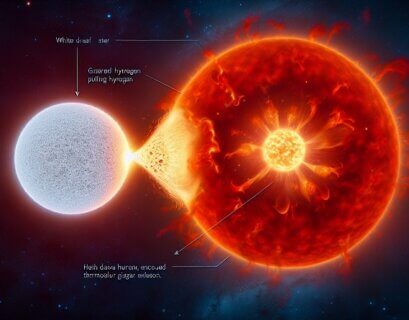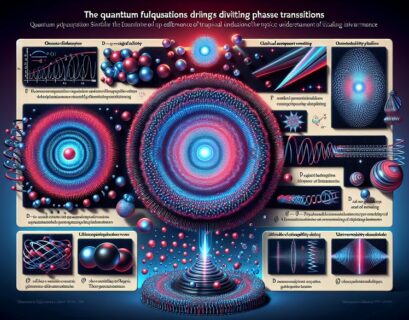Post Views: 0
Practical physics is the branch of physics that focuses on the application of theoretical concepts to real-world situations. It involves conducting experiments, making measurements, and analyzing data to understand and explain the physical phenomena that occur in our everyday lives. Practical physics is important because it allows us to develop a deeper understanding of the natural world and provides us with the tools to solve practical problems.
To understand practical physics, it is essential to grasp the fundamental concepts that underpin the field. These concepts include units and measurements, laws of motion, elasticity, rotational motion, gravitation, work and energy, heat and thermodynamics, and waves and optics. Each of these concepts plays a crucial role in explaining various physical phenomena and can be applied to a wide range of practical situations.
Key Takeaways
- Practical physics involves understanding the fundamentals of the subject.
- The metric system and SI units are used for units and measurements in physics.
- Young’s modulus helps us understand elasticity and tensile strength.
- Newton’s laws of motion analyze the relationship between force and motion.
- Rotational motion involves understanding angular velocity and acceleration.
Table of Contents
ToggleUnits and Measurements in Physics: The Metric System and SI Units
In practical physics, accurate measurements are essential for understanding and predicting physical phenomena. The metric system is used in physics because it provides a standardized set of units that are easy to use and understand. The metric system is based on powers of ten, which makes conversions between different units straightforward.
The International System of Units (SI) is a modern version of the metric system that is used in scientific research and engineering. It provides a coherent set of units for measuring physical quantities such as length, mass, time, temperature, electric current, luminous intensity, and amount of substance. The SI units are based on seven fundamental quantities: meter (m) for length, kilogram (kg) for mass, second (s) for time, ampere (A) for electric current, kelvin (K) for temperature, candela (cd) for luminous intensity, and mole (mol) for amount of substance.
Young’s Modulus: Understanding Elasticity and Tensile Strength
Young’s modulus is a fundamental concept in practical physics that relates to the elasticity and tensile strength of materials. It is a measure of the stiffness of a material and describes how much it deforms under an applied force. Young’s modulus is defined as the ratio of stress to strain, where stress is the force applied per unit area and strain is the change in length per unit length.
Young’s modulus is used to determine the behavior of materials under tension or compression. For example, if a material has a high Young’s modulus, it means that it is very stiff and will not deform much under an applied force. On the other hand, if a material has a low Young’s modulus, it means that it is more flexible and will deform more easily.
Real-world examples of Young’s modulus in action can be seen in various applications. For instance, when designing bridges or buildings, engineers need to consider the Young’s modulus of the materials used to ensure that they can withstand the forces they will be subjected to. Similarly, in the field of biomechanics, understanding Young’s modulus is crucial for designing prosthetics or implants that can mimic the mechanical properties of natural tissues.
Newton’s Laws of Motion: Analyzing the Relationship Between Force and Motion
Newton’s laws of motion are fundamental principles in practical physics that describe the relationship between force and motion. These laws were formulated by Sir Isaac Newton in the 17th century and are still widely used today to analyze and predict the behavior of objects in motion.
The first law of motion, also known as the law of inertia, states that an object at rest will remain at rest, and an object in motion will continue moving at a constant velocity unless acted upon by an external force. This law explains why objects tend to resist changes in their state of motion.
The second law of motion states that the acceleration of an object is directly proportional to the net force acting on it and inversely proportional to its mass. This law can be expressed mathematically as F = ma, where F is the net force, m is the mass of the object, and a is its acceleration. This law allows us to calculate the force required to accelerate an object or determine the acceleration produced by a given force.
The third law of motion states that for every action, there is an equal and opposite reaction. This means that whenever one object exerts a force on another object, the second object exerts an equal and opposite force on the first object. This law explains why objects move in pairs and why forces always occur in pairs.
These laws of motion are used in practical physics to analyze and predict the behavior of objects in various situations. For example, they can be used to calculate the forces acting on a car during a collision or to determine the trajectory of a projectile.
Rotational Motion: Understanding Angular Velocity and Acceleration
Rotational motion is a fundamental concept in practical physics that describes the motion of objects around a fixed axis. Unlike linear motion, which involves movement along a straight line, rotational motion involves movement around a central point.
Angular velocity is a measure of how quickly an object rotates around an axis. It is defined as the rate of change of angular displacement with respect to time and is usually measured in radians per second (rad/s). Angular velocity can be calculated by dividing the change in angular displacement by the change in time.
Angular acceleration, on the other hand, is a measure of how quickly an object’s angular velocity changes over time. It is defined as the rate of change of angular velocity with respect to time and is usually measured in radians per second squared (rad/s^2). Angular acceleration can be calculated by dividing the change in angular velocity by the change in time.
Understanding angular velocity and acceleration is crucial for analyzing rotational motion and predicting how objects will behave. For example, these concepts are used to calculate the centripetal force required to keep an object moving in a circular path or to determine the torque needed to rotate an object.
Torque and Moment of Inertia: Analyzing the Effects of Rotational Forces

Torque is a fundamental concept in practical physics that describes the rotational equivalent of force. It is defined as the product of the force applied to an object and the distance from the axis of rotation at which the force is applied. Torque is usually measured in newton-meters (Nm) or foot-pounds (ft-lb).
Torque is responsible for causing objects to rotate around an axis. The greater the torque applied to an object, the greater its rotational acceleration will be. Torque can be calculated by multiplying the force applied to an object by the perpendicular distance from the axis of rotation to the line of action of the force.
Moment of inertia is another fundamental concept in practical physics that describes an object’s resistance to rotational motion. It is a measure of how mass is distributed around an axis of rotation and depends on both the mass and shape of an object. Moment of inertia is usually measured in kilogram-meters squared (kg·m^2) or pound-feet squared (lb·ft^2).
Understanding torque and moment of inertia is crucial for analyzing the effects of rotational forces and predicting how objects will behave. For example, these concepts are used to calculate the torque required to rotate an object or to determine how fast an object will accelerate when a certain torque is applied.
Gravitation: Understanding the Law of Universal Gravitation and Orbital Motion
Gravitation is a fundamental concept in practical physics that describes the force of attraction between objects with mass. It is responsible for holding planets in orbit around the sun, causing objects to fall towards the Earth, and determining the motion of celestial bodies.
The law of universal gravitation, formulated by Sir Isaac Newton, states that every particle of matter in the universe attracts every other particle with a force that is directly proportional to the product of their masses and inversely proportional to the square of the distance between them. This law can be expressed mathematically as F = G(m1m2/r^2), where F is the force of gravity, G is the gravitational constant, m1 and m2 are the masses of the two objects, and r is the distance between their centers of mass.
Orbital motion is a specific type of motion that occurs when an object moves around another object under the influence of gravity. It is characterized by a balance between the gravitational force pulling the object towards the center and the object’s inertia pushing it away. Orbital motion can be either circular or elliptical, depending on the initial conditions and the shape of the orbit.
Understanding the law of universal gravitation and orbital motion is crucial for analyzing celestial phenomena and predicting how objects will move in space. For example, these concepts are used to calculate the gravitational force between planets, determine the escape velocity required to leave Earth’s atmosphere, or predict the path of a satellite in orbit.
Work, Energy, and Power: Analyzing the Relationship Between Force and Energy
Work, energy, and power are fundamental concepts in practical physics that describe the relationship between force and energy. They are used to analyze and predict how objects will behave when work is done on them or when they do work on other objects.
Work is defined as the product of force and displacement in the direction of the force. It is a measure of how much energy is transferred to or from an object when a force acts on it. Work can be calculated by multiplying the magnitude of the force by the magnitude of displacement and by the cosine of the angle between them.
Energy is a measure of an object’s ability to do work or transfer heat. It exists in different forms, such as kinetic energy (energy of motion), potential energy (energy of position), thermal energy (energy of heat), and electromagnetic energy (energy of light). Energy can be transferred from one object to another or transformed from one form to another, but it cannot be created or destroyed.
Power is the rate at which work is done or energy is transferred. It is defined as the work done or energy transferred per unit time and is usually measured in watts (W) or joules per second (J/s). Power can be calculated by dividing the work done or energy transferred by the time taken.
Understanding work, energy, and power is crucial for analyzing various physical phenomena and predicting how objects will behave. For example, these concepts are used to calculate the amount of work done by a machine, determine the efficiency of a process, or analyze the power output of an engine.
Heat and Thermodynamics: Understanding the Principles of Heat Transfer and Thermal Energy
Heat and thermodynamics are fundamental concepts in practical physics that describe the principles of heat transfer and thermal energy. They are used to analyze and predict how heat flows between objects and how thermal energy is converted into other forms of energy.
Heat transfer is the process by which thermal energy is exchanged between objects or regions due to a temperature difference. It can occur through three main mechanisms: conduction (transfer of heat through direct contact), convection (transfer of heat through the movement of fluids), and radiation (transfer of heat through electromagnetic waves).
Thermal energy is a measure of an object’s internal energy due to its temperature. It is related to the kinetic energy of the particles that make up an object and determines how hot or cold it feels. Thermal energy can be transferred from one object to another or transformed into other forms of energy, such as mechanical, electrical, or chemical energy.
Understanding heat transfer and thermal energy is crucial for analyzing various physical phenomena and predicting how objects will behave. For example, these concepts are used to calculate the rate of heat transfer in a cooling system, determine the efficiency of a heat engine, or analyze the behavior of gases under different conditions.
Waves and Optics: Analyzing the Properties of Light and Sound Waves
Waves and optics are fundamental concepts in practical physics that describe the properties of light and sound waves. They are used to analyze and predict how waves propagate through space and interact with objects.
Waves are disturbances that transfer energy from one place to another without transferring matter. They can be classified into two main types: mechanical waves, which require a medium to propagate (such as sound waves), and electromagnetic waves, which can propagate through a vacuum (such as light waves).
The properties of waves include wavelength, frequency, amplitude, and speed. Wavelength is the distance between two consecutive points on a wave that are in phase, while frequency is the number of complete cycles of a wave that pass a given point per unit time. Amplitude is the maximum displacement of particles in a wave from their equilibrium position, while speed is the rate at which a wave propagates through space.
Optics is the branch of physics that deals with the behavior and properties of light. It includes the study of reflection, refraction, diffraction, interference, polarization, and dispersion. Optics is used to understand how light interacts with objects and how it can be manipulated to form images or transmit information.
Understanding waves and optics is crucial for analyzing various physical phenomena and predicting how objects will behave. For example, these concepts are used to explain how sound travels through different mediums, determine the color of an object based on its interaction with light, or design optical devices such as lenses or mirrors.
In conclusion, practical physics is a fascinating field that allows us to understand and explain the physical phenomena that occur in our everyday lives. By applying fundamental concepts such as units and measurements, laws of motion, elasticity, rotational motion, gravitation, work and energy, heat and thermodynamics, and waves and optics, we can gain a deeper understanding of the natural world and solve practical problems.
Units and measurements provide a standardized system for making accurate measurements in physics. Young’s modulus helps us understand the elasticity and tensile strength of materials. Newton’s laws of motion explain the relationship between force and motion. Rotational motion involves movement around a central point and is described by angular velocity and acceleration. Torque and moment of inertia analyze the effects of rotational forces. Gravitation explains the force of attraction between objects with mass. Work, energy, and power describe the relationship between force and energy. Heat and thermodynamics analyze the principles of heat transfer and thermal energy. Waves and optics describe the properties of light and sound waves.
By understanding these fundamental concepts, we can analyze various physical phenomena, predict how objects will behave, and solve practical problems in fields such as engineering, medicine, and environmental science. Practical physics is a field that continues to evolve and expand our understanding of the natural world. I encourage readers to continue exploring this fascinating field and to apply these concepts to real-world situations.
If you’re interested in expanding your knowledge beyond practical physics, you might want to check out the article “A Beginner’s Guide to Biochemistry: A Comprehensive Overview of the Fundamentals and Applications.” This informative piece provides a detailed introduction to the field of biochemistry, covering everything from the basic principles to its real-world applications. Whether you’re a student looking to delve into the world of biochemistry or simply curious about this fascinating subject, this article is a must-read. (source)











